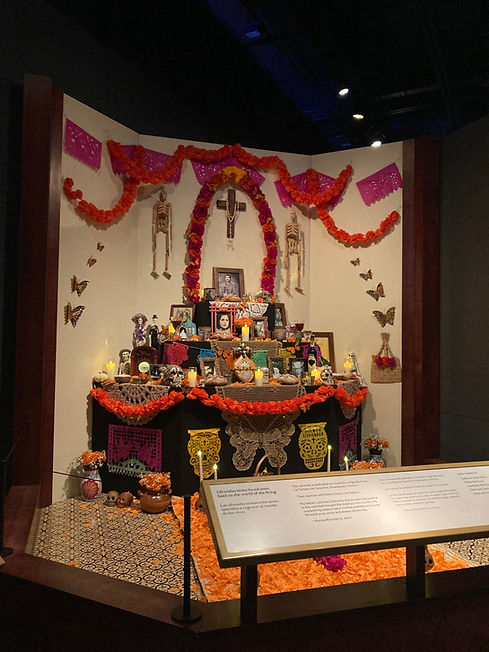Dia de los Muertos
Día de los Muertos, or Day of the Dead, is a Mexican holiday that celebrates and honors the lives of deceased loved ones. Observed on November 1st and 2nd, it blends Indigenous traditions with Catholic beliefs to reflect the idea that death is a natural part of life’s cycle. Families create colorful altars (ofrendas), decorate graves, and share food, music, and memories to welcome the spirits of those who have passed. Rather than a time of mourning, it is a joyful celebration of love, remembrance, and the enduring connection between the living and the dead.
Handmade Sugar Skulls
Sugar skulls, or calaveras de azúcar, are a traditional part of Mexico’s Día de los Muertos (Day of the Dead) celebration. Made from molded sugar and decorated with colorful icing, foil, and beads, they honor the souls of departed loved ones. Each skull often bears the name of the deceased and is placed on an altar (ofrenda) alongside flowers, candles, and food. Their bright designs reflect the belief that death is not an end but a continuation of life’s cycle.
Rooted in both Indigenous and Catholic traditions, sugar skulls blend pre-Hispanic views of death with Spanish influences. They serve as joyful reminders to celebrate life and remember those who have passed with love rather than sorrow. Today, sugar skulls have also become powerful symbols of Mexican culture and identity, representing remembrance, resilience, and the beauty found in life and death alike.



Ofrendas
An ofrenda, or altar, is the heart of Día de los Muertos (Day of the Dead) celebrations in Mexico. It is a carefully arranged display created to honor and welcome the spirits of deceased loved ones back to the world of the living. Families decorate their ofrendas with photos of the departed, candles, marigolds (cempasúchil), food, and personal items that held meaning for the person being remembered. Each element is symbolic, representing love, memory, and the connection between life and death.
Rooted in ancient Indigenous traditions blended with Catholic beliefs, the ofrenda reflects the idea that death is a natural part of life’s cycle. Rather than mourning, families celebrate the return of their loved ones’ spirits with warmth, color, and joy. Today, ofrendas continue to serve as powerful expressions of remembrance and cultural identity, preserving the bond between generations and keeping the memory of ancestors alive.
In Fall on 2022 I was honored to create an ofrenda for the Field Museum's Death: Life's Greatest Mystery exhibit. I traveled throught Michoacan and Guanajuato Mexico and purchased traditional items from local vendors. The items not purchased where handmade by my family members. The ofrenda honors three generations of my family and is a tribute to my father, Ruben Rios Parra who always lovingly encouraged my artistic career.
